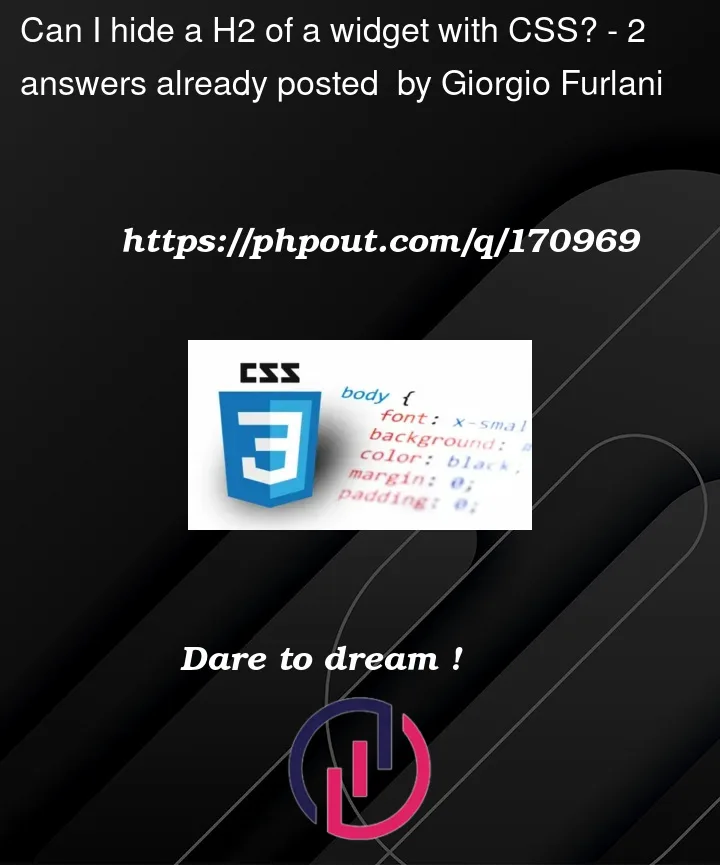I have a blog where I use the affiliate links of GetYourGuide.
In particular, I use it in this page:
https://www.visitare.net/best-tours-in-bologna/
I insert the affiliate widget through the HTML widget of Elementor, and it comes with a very annoying H2 header:
I tried to delete it with CSS:
.title-banner {display:none;}
.title-banner[data-v-48b40ecd] {display:none;}
and I also used !important, but nothing worked
This problem also repeats each time I use this affiliate links, I don’t understand why GetYourGuide has to insert a headline that should be personal based on the blog.





2
Answers
Before you start reading here, please read my comments under the OP’s question.
After some thought and as a last resort, it could be done with some sort of workaround. It’s just an idea and maybe it will get to the point, especially when it comes to mobile views, where it doesn’t make sense anymore. You’ll just have to experiment around there.
So what’s it all about? The idea is to put the
<iframe>in a container, set toposition: absolute;and pull it up a bit with a negative value formargin-top. Finally, we also need theclip-pathproperty to mask it. NOTE: This is what you need to do for each<iframe>, e.g. Top sights in Bologna, Best Food Tours, etc.For a better understanding here is a very brief example. The gray area is virtually the container. Of course, it can have the same
heightas the<iframe>and is only larger for demonstration purposes. The red area, on the other hand, is supposed to represent the<iframe>. Finally, the Lorem Ipsum placeholder text simply represents any arbitrary content. In your case, of course, this would be the images.I think putting the
<iframe>into a container and then applying the CSS rules from below should be possible with Elementor.EDIT (in reference to a comment by the OP):
I took another look at your website and found that a suitable container already exists. Besides that, you can also omit setting
position: absolute;. I have to mention that by not having custom class names or IDs, I had to fall back on what was there. I’ll come back to that later.First, here is the required CSS:
Targeting explanation:
body.page-id-7215– is needed to not take effect on other subpages as well (unique page id).elementor-element-a8f0323– class name of left column containing Top sights in Bologna, etc..elementor-element-0ca608c– class name of right column containing Useful Links, etc..elementor-widget-container– the widget containerdiv:first-child– the actual container of the<iframe>(the one we need)Properties explanation:
I have already explained the properties before (see above).
Screenshot (CSS applied via DevTools):
https://i.imgur.com/tEusP11.jpg
Closing words:
To come back to what I already mentioned. Using
.page-id-7215,.elementor-element-a8f0323and.elementor-element-0ca608cis suboptimal, since these names can change, e.g. with a new installation, etc.You can’t do that in the browser. When an iFrame is loaded from a domain different that that of the webpage, JavaScript access to that iFrame is blocked. CSS too. You might be able to fiddle with the Content Security Policies
metatags on in your HTML but I doubt it.You could however use a server like Nodejs and do it. Use Node’s
httpmodule and load/fetch all these widgets then usejsdomto get the parts you want and assemble it all into your final webpage.You could run that node script daily or hourly to save your customized HTML (page) on disk and serve it static.